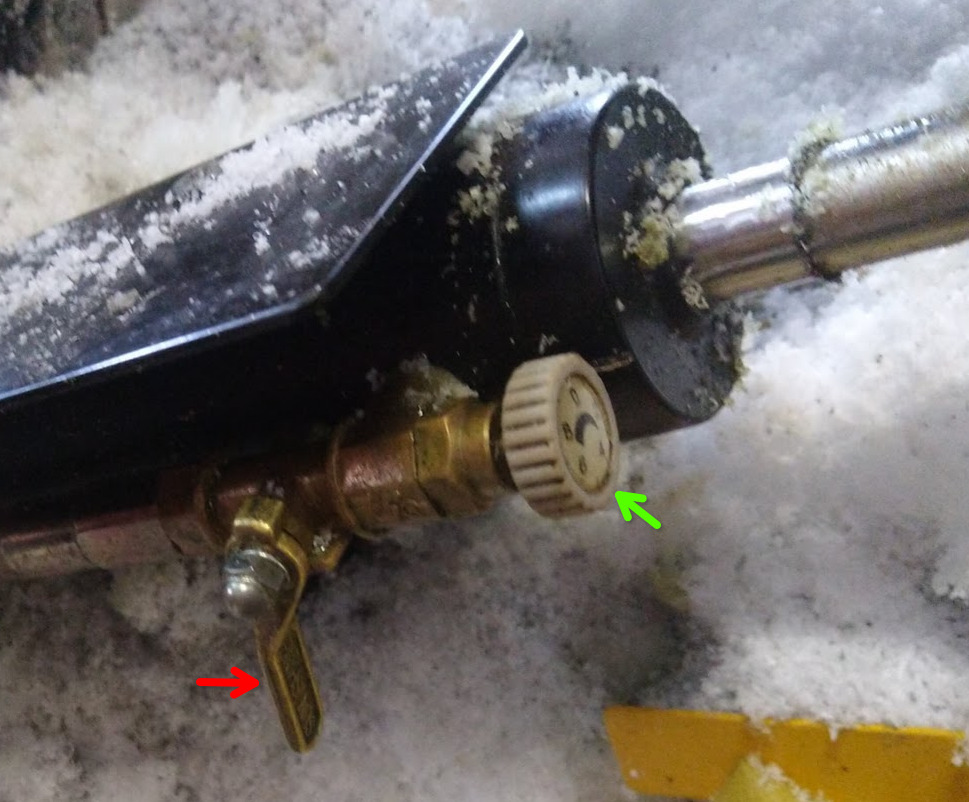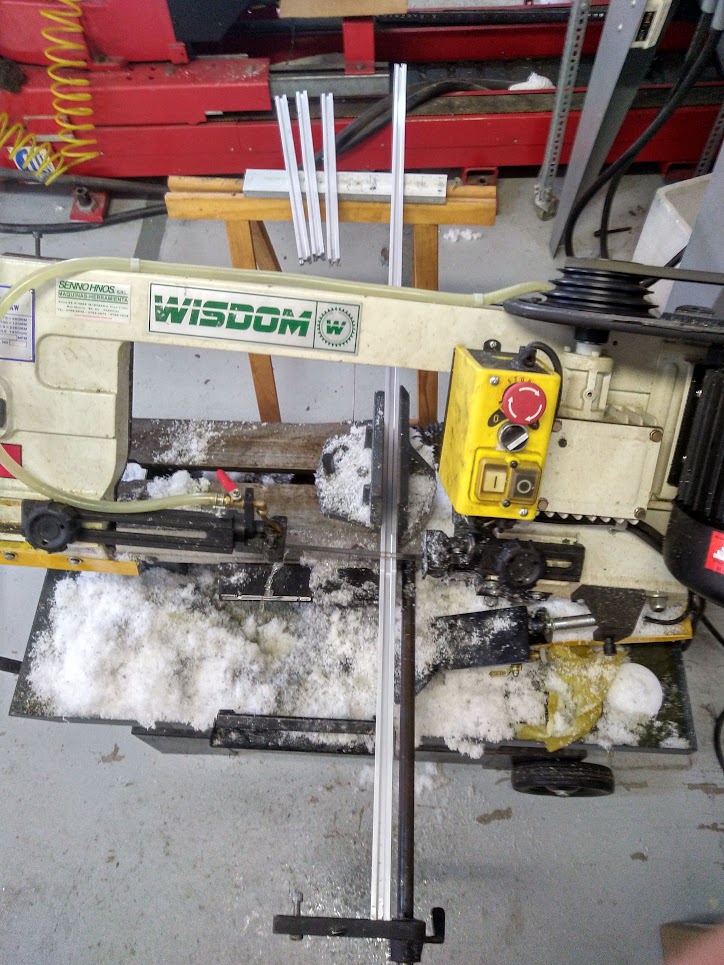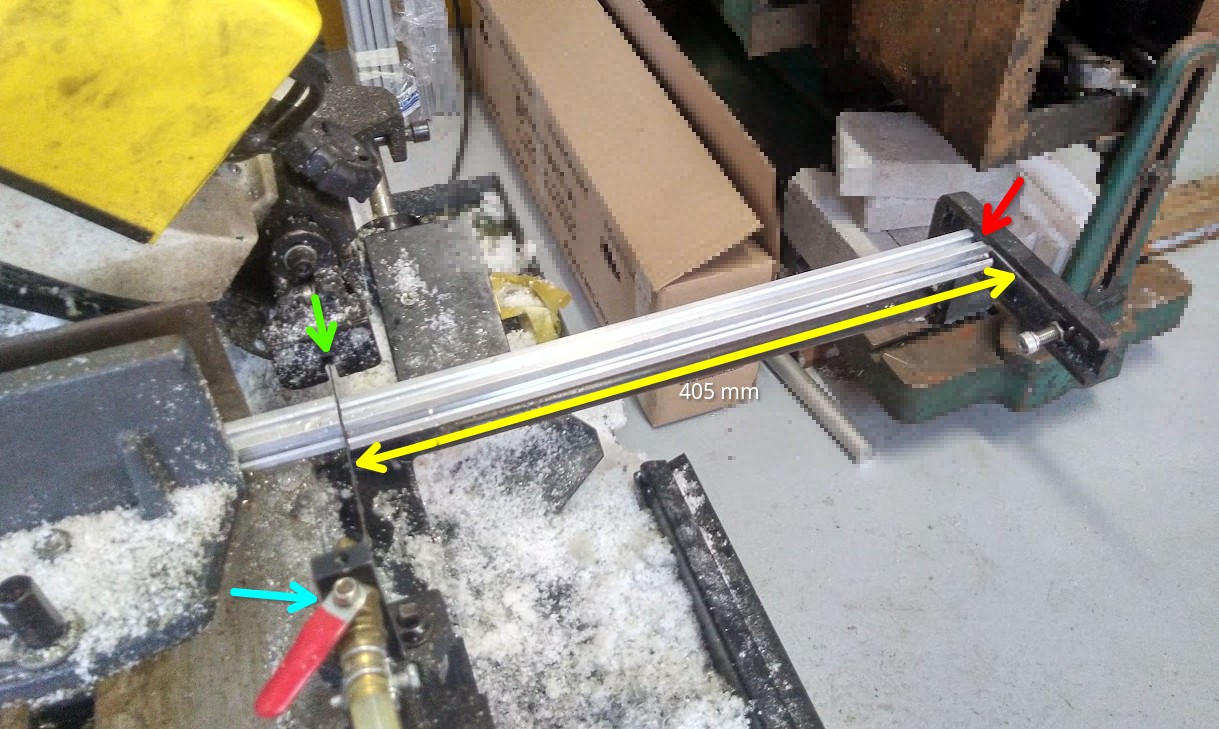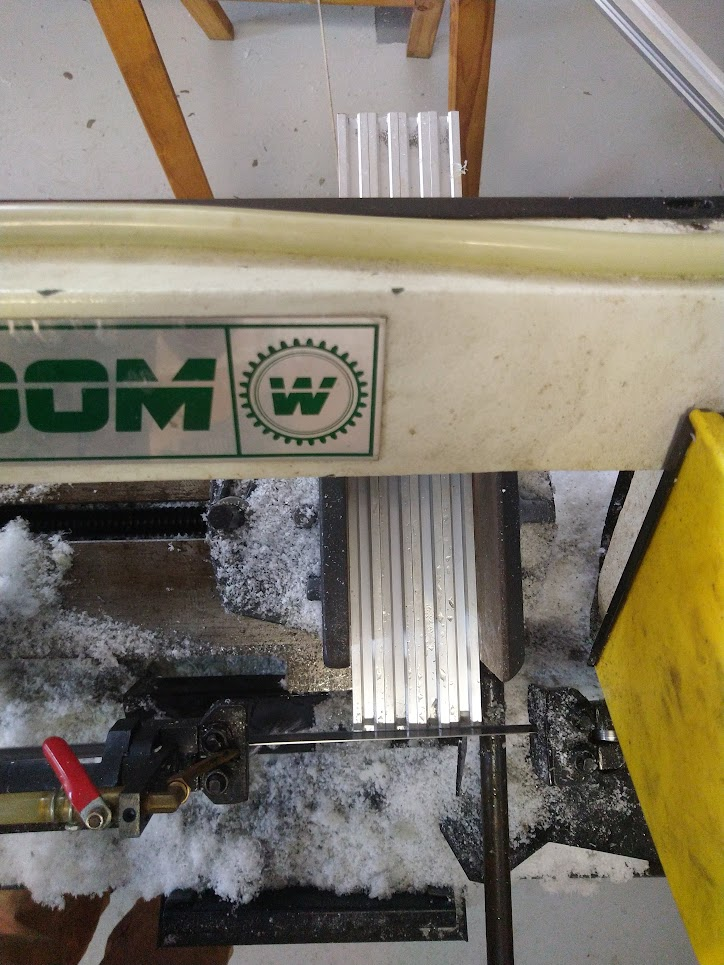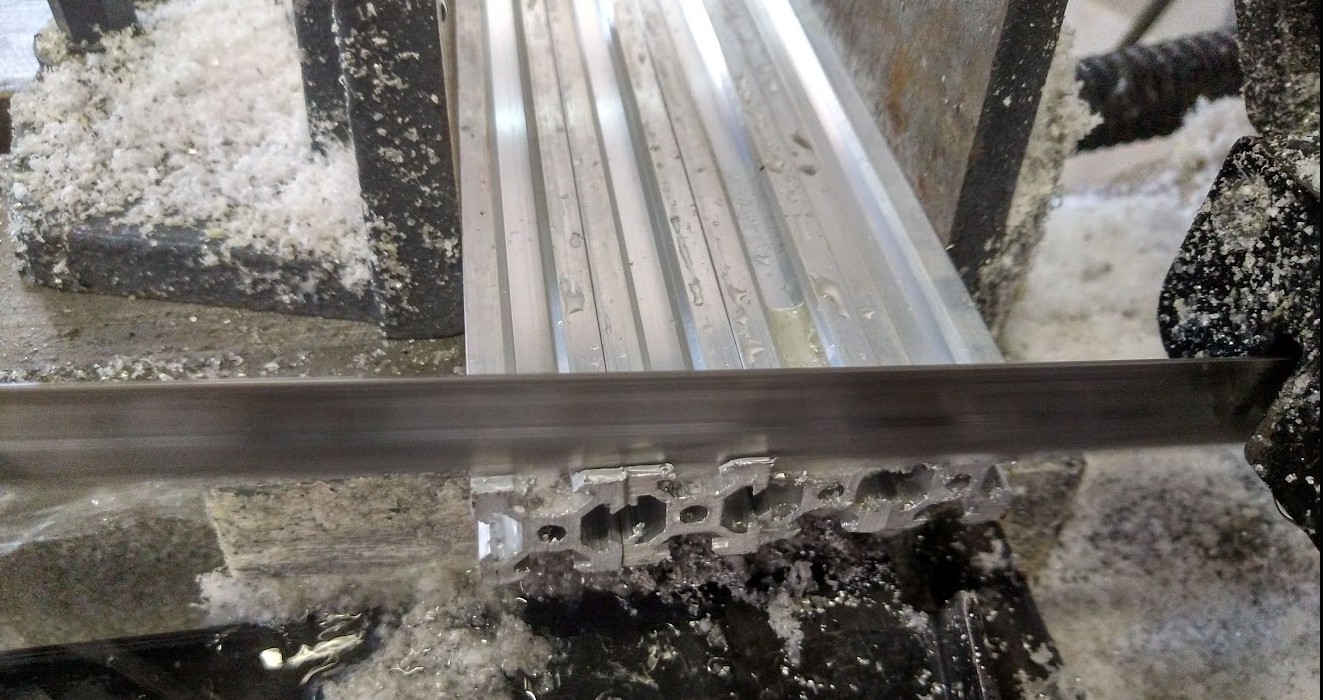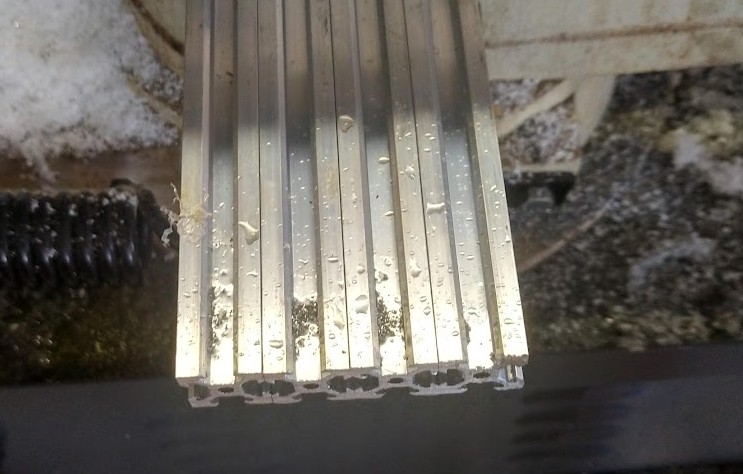Using a Band Saw to cut aluminum profiles
Using a Band Saw to cut aluminum profiles¶
There are surely many ways to cut aluminum profiles to length, withing "acceptable" error tolerances.
One of them is using a band-saw, and perhaps the simplest one is to look for a supplier that will cut them for you with good precision.
Here are our notes about the do-it-together way.
The band-saw¶
Warning
Only use this instrument if you have received proper education. You can hurt yourself badly if you do not learn how to use it properly and safely.
Our band-saw looks like this:
This saw works by "falling" very slowly on its own, while turning the band saw with an electric motor. The speed of the cut is regulated hydraulically with a small knob.
The knob (green arrow) regulates the speed of the cut. For the saw to fall, the safety valve (red arrow) must be in the open position.
The slower the movement, the cleaner the cut. We need cleaner, more square cuts when we can get them.
Cutting to length¶
Our band saw is not really a precision instrument.
The assembly instructions for the pipetting bot require profiles cut to 600 mm (3 units) and 400 mm (8 units). Each set can, however, be cut to another lengths, as long as the profiles in each set are cut to the same length (e.g. 3x598mm + 8x391mm).
Warning
It is crucial that the shorter set is longer than the short side of the baseplate. It will otherwise not fit, and require some annoying surgery.
Step 1: Rough cuts¶
Profiles may come in long pieces, of 3 meters or more. We recommend that you first cut them into smaller pieces, to a working length that is a couple centimeters longer than their final lenght.
Warning
Because the profiles are long, they will bend if handled improperly. In the image below, we placed a trestle support behind the saw to mitigate this issue. This will bring you headaches when assembling the structure. They can bend very slightly, and still cause important misalignments.
Lets cut the shorter set of 20X20 V-slot profiles as an example, to 400 mm in length.
Profiles are often sold in segments of 3 or 4 meters. To cut them to the same length, you can start by making a faster cut to, say, 405 mm, making them easier to handle.
Place the profile on the band saw, and tighten the vise slightly, allowing the profile to slide with some friction. Lower the band saw to a low position, just above the profile. Measure 405 mm (yellow arrow) between the end of the profile (red arrow) and the saw (green arrow).
Make sure that the profile is in perfect contact with the "base" of the vise, and only then tighten firmly.
Your band-saw can have a "stop" on one end (red arrow). You can use this as a guide to cut more consistently by fixing it in position at the end of the profile (red arrow),
You can now cut the profiles using the band-saw. Consider turning on the coolant (cyan arrow) to help the aluminum stay cool during the cut.
Step 2: Nice cuts¶
When you have a few of them, prepare a bundle, and cut one end to the same length (image below) by removing a small amount on each (e.g. 1 or 2 mm). Then turn the bundle around, without them sliding respect to one another and place them back in the vise. You can now try using a ruler to measure them and then cut them to 400 mm (or as close as possible).
To optimize the length of different cuts of 20x20 V profiles so that they all fit the same, you can:
- Place all the profiles horizontally on a flat surface, with the cut bases perpendicular to the surface. If the cut bases are not perpendicular, you can correct them by filing them or cutting them slightly.
- Find a cutting line that is perpendicular to the arrangement of the profiles (as shown below)
Tip
Make sure that the profiles are all aligned before you start cutting. You can keep the bundle aligned by using clamps. If you use clamps, be careful not to overtighten them, as this can deform the profiles. Wear safety glasses and gloves when cutting.
- Place the profile bundle on the saw, tightening the vise very slightly.
- Lower the band saw until it is barely above them. Make measurements with a ruler while you slide the bundle, until they are of the correct length.
- You are now ready to cut!
- Observe the result and consider passing the saw a few times at slower speeds to improve the cut's finish.
- Finally, use a file tool or sanding paper to remove any remaining burr.

